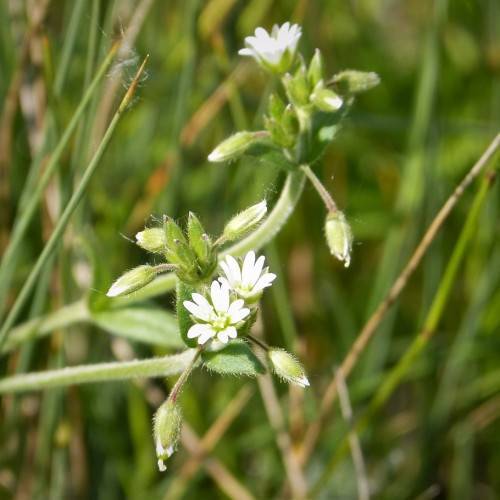
Common Mouse-Ear Chickweed
Cerastium fontanum
Watering:
Minimal
Hardiness Zone:
Sun:
full sun,part shade
Leaf:
Yes
Growth Rate:
Low
Drought Tolerant:
Yes
Salt Tolerant:
Yes
Invasive:
Yes
Care Level:
Medium
watering
Mountain Chickweed should generally be watered once a week, in order to keep the soil moist but not saturated. Aim for about 1 inch (2.54 centimetres) of water. During the hot summer months, the plant may require a little more water than normal. Ensure that the soil is well drained in order to avoid any standing water, which can cause root rot. If necessary, increase the watering to twice a week during periods of excessive heat or dryness.
sunlight
Mountain chickweed, also known as Cerastium cerastoides, is a perennial plant that can thrive in well-drained, sunny areas. This plant does best in full sun, meaning it needs at least 6 hours of direct sunlight each day. The exact amount of sunlight the plant needs can vary depending on the climate, but in general it should receive 8-10 hours of sunlight in the summer and 4-6 hours of sunlight in the winter. If it is grown in an area with shade, additional light sources, such as a grow light, may need to be used to provide adequate light levels.
pruning
Mountain Chickweed should be pruned once annually, usually in early to mid spring. Pruning should begin when the plant is young, and lightly trim back new growth throughout the season. Pruning should encourage branching and reduce the plant’s height. Dead and damaged stems should also be removed while pruning. Additionally, any flowers that have gone to seed should be removed to prevent self-seeding of the plant. Mountain Chickweed should be pruned with care to remove up to a third of the plant’s total stem length.
